Leroy Lutz
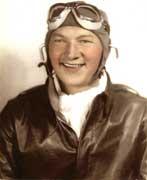
Lt Leroy Lutz
© Lutz-Maddock Family - www.fold3.com
Leroy Lutz
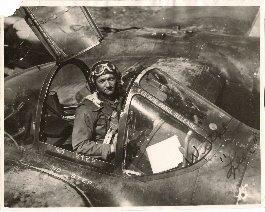
2nd Lt. Leroy F. Lutz
Lockheed Lightning P-38 J “Jack The Ripper”
434th Fighter Squadron, 479th Fighter Group
© Michael Maddock
Né le 6 mars 1920, le Lieutenant Leroy Lutz est un pilote de l'US Air Force de la seconde guerre mondiale pratiquement inconnu. Il n'est pas célèbre comme Don Gentile, Chuck Yeager ou Richard Bong et pourtant, il a commis un acte héroïque incommensurable : il a sacrifié sa vie pour en sauver quelques autres !
Born on Marc 6th, 1920, Lieutenant Leroy Lutz was a pilot of the US Air Force during World War II who is today almost totally unknown. He is not famous like Don Gentile, Chuck Yeager or Richard Bong but he achieved an incommensurable heroic act : he sacrificed his life just to save some other lives !
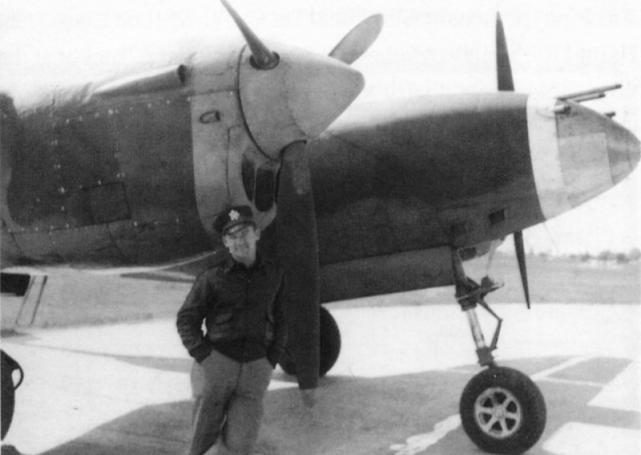
Lt. Leroy F. Lutz, Lockheed Lightning P-38 J “Jack The Ripper”
434th Fighter Squadron, 479th Fighter Group
Photo : © Lutz-Maddock family - with courtesy http://www.littlefriends.co.uk (Peter Randall)
Jeudi 22 juin 1944, le Lieutenant Lutz, 24 ans, originaire du Nebraska, survole la voie ferrée de la région de la Marne dans le but d'attaquer d'éventuels trains militaires allemand se dirigeant vers la Normandie pour renforcer les troupes faisant face aux alliés récemment débarqués. Il pilote ce jour-là le Lockheed Lightning P-38 J (s/n 43-28714) "Lucky Lady" du 479th Fighter Group, qui n'est pas son P-38 habituel mais celui d'Arnold Helding, originaire du Montana.
On Thursday, June 22nd, 1944, Lieutenant Lutz, 24 years, a native of Nebraska, was flying over the railway in the region of the Marne, hoping to attack German military trains moving towards Normandy to reinforce the troops who were fighting the allied troops recently landed. It flew that day the Lockheed Lightning P-38 J (s/n 43-28714) “Lucky Lady” of the 479th Fighter Group, which was not his own P-38 but that of Arnold Helding, a native of Montana.
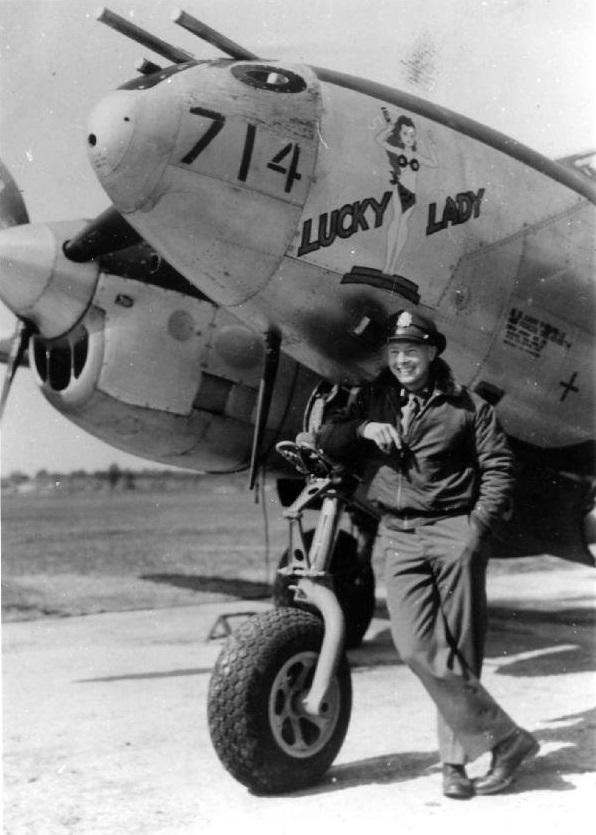 Lt. Arnold G. Helding, Lockheed Lightning P-38 J (s/n 43-28714) "Lucky Lady"
Lt. Arnold G. Helding, Lockheed Lightning P-38 J (s/n 43-28714) "Lucky Lady"
434th Fighter Squadron, 479th Fighter Group
Photo : © Fred Hayner via Danny Morris - with courtesy http://www.littlefriends.co.uk (Peter Randall)
Malheureusement, son avion fut touché par la DCA allemande ; jugeant que l'avion allait s'écraser sur des maisons du village de Mardeuil (Marne), Lutz décida de ne pas sauter en parachute et s'écrasa un peu plus loin, entre la voie ferrée et la propriété de Victoire Garnier, après avoir lâché ses deux bombes dont une tomba à proximité du cimetière. Lutz ne survécut pas au crash.
Unfortunately, his plane was hit by the German flak ; estimating that the aircraft was about to crash on houses in the village of Mardeuil (Marne, France), Lutz did not jump in parachute and crashed a bit further, between the railway and the property of Victoire Garnier, after having dropped his two bombs, one of them falling near the cemetery. Lutz did not survive the crash.

Lockheed P-38J-15-LO (s/n 43-28714) "Lucky Lady" - 434th Fighter Squadron, 479th Fighter Group
© Pierre-André Tilley
Après la guerre - After the war
LA RECONNAISSANCE DU VILLAGE DE MARDEUIL
THE RECOGNITION OF THE VILLAGE OF MARDEUIL (FRANCE)
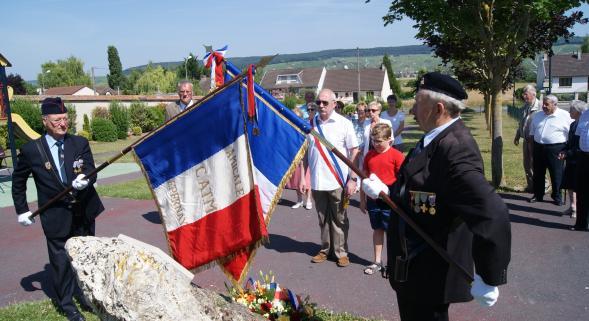
© L'Union - l'Ardennais - www.lunion.presse.fr
Les habitants du village de Mardeuil n'oublieront jamais le sacrifice de Leroy Lutz qui a permis d'éviter que son avion ne s'écrase sur quelques maisons et probablement cause la mort de quelques civils. Un square porte son nom dans le village et en juin 2014 a été commémoré le souvenir du pilote. Ci-après un extrait de l'article publié par L'Union-L'Ardennais :
"Les anciens combattants racontent encore que « la DCA allemande et les quatre tubes du train sont entrés en action et le Lucky Lady fut touché. Dans une ultime tentative, le pilote lâcha ses deux bombes dont l’une tomba près du cimetière, avant de s’abattre dans un champ, épargnant le village ». Les enfants du village, dont André Mathy, découpèrent l’effigie de la mascotte du 479th groupe. Cette effigie fut remise 60 ans plus tard, par André Mathy, à la famille de l’aviateur, qu’il avait retrouvée 50 ans après cet événement dramatique. Lors de leur visite à Mardeuil en 2003, tous les membres de la famille du jeune pilote furent déclarés citoyens d’honneur de la commune."
The people from the village of Mardeuil will never forget the sacrifice of Leroy Lutz who avoided his aircraft to crash on houses and probably kill some inhabitants. A public garden is called with his name in the village and in June 2014 was commemorated the memory of the pilot. Hereafter an extract of an article published by "L'Union -L'Ardennais" (the local newspaper) :
“The veterans still tell that “the German Flak and the four tubes of the train opened fire and the Lucky Lady was hit. In an ultimate move, the pilot dropped his two bombs of which one fell close to the cemetery, before crashing in a field, saving the village. “Children of the village, among them André Mathy, cut on the aircraft the part with the mascot of the 479th group. This effigy was given 60 years later, by André Mathy, to the family of the pilot, that he had found 50 years after this dramatic event. When visiting Mardeuil in 2003, all the family members of the young pilot were declared citizens of honor of the village ”.
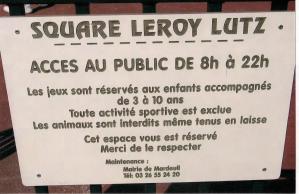 Square Leroy Lutz, Mardeuil (51 - Marne), France
Square Leroy Lutz, Mardeuil (51 - Marne), France
© Lutz-Maddock Family - www.fold3.com
ANDRÉ MATHY SE SOUVIENT
ANDRÉ MATHY REMEMBERS
André Mathy avait 13 ans ce jeudi 22 juin 1944. Il n'y avait pas d'école et il se rendait vers 15h avec son cousin chercher des cerises chez son grand-père. Sur le chemin proche du cimétière de Mardeuil, ils entendent un grand bruit, lèvent les yeux au ciel et voient, à basse altitude, 4 avions P-38 américains mitrailler des trains d'approvisonnement allemands. Touché par la Flak, un des avions touche un panneau de signalisation et perd un morceau de son aile.
André Mathy was 13 years old this Thursday, June 22, 1944. There was no school and he was walking around at 3 pm with his cousin to look for cherries at his grandfather. On the way close to the cemetery of Mardeuil, they heard a great noise, raised the eyes to the sky and saw, at low altitude, 4 American P-38 aircrafts machine-gunning German approvisonnement trains. Hit by the Flak, one of the aircraft touched a control panel and lost a piece of its wing.
Extrait d'un article de l'Union-l'Ardennais du 30 janvier 2012 (www.lunion.presse.fr)
« Il a quitté l'axe, on l'a vu arriver direct sur nous », raconte André Mathy. « Il a lâché deux bombes : la première a explosé sur le mur du cimetière, la seconde n'a pas explosé, elle a été retrouvée plus tard dans un champ voisin ». André et son cousin assistent alors au curieux manège de l'avion. « Le pilote a soudain redressé l'appareil. Il est monté à la verticale pour éviter de s'écraser sur le village ». Les enfants comprennent immédiatement que le sacrifice du pilote représentait un véritable acte de bravoure. Ni une, ni deux, les jeunes témoins du crash s'élancent, sans peur du danger, vers le P-38 qui s'est écrasé dans un champ. « Les Allemands étaient là. Le corps du pilote gisait un peu plus loin, sans doute éjecté au moment du crash », suppose André. Son corps sera récupéré par les gens du village, avant de rejoindre un caveau municipal pour une inhumation qui s'est déroulée en présence de la population de Mardeuil. Son corps sera rendu à sa famille dès la libération.
Extract of the local newspaper article L'Union - L'Ardennais - January 30th, 2012 ((www.lunion.presse.fr)
“It left the axis, we saw it arriving direct on us”, André Mathy told. “It dropped two bombs : the first exploded on the wall of the cemetery, the second did not explode, it was found later in a nearby field”. André and his cousin then attend the curious movements of the aircraft. “The pilot suddenly pulled up the aircrfat. He flew vertically to avoid being crashed on the village”. The children understood immediately that the sacrifice of the pilot represented a true act of bravery. Rapidly the young witnesses of the crash landing ran, without fear of the danger, towards the P-38 which was crashed in a field. “The Germans were there. The body of the pilot layed a little further, probably ejected during the crash landing”, André supposed. His body had been recovered by people of the village, before joining a municipal cemetery for a burial in the presence of the population of Mardeuil. His body was returned to his family at the liberation.
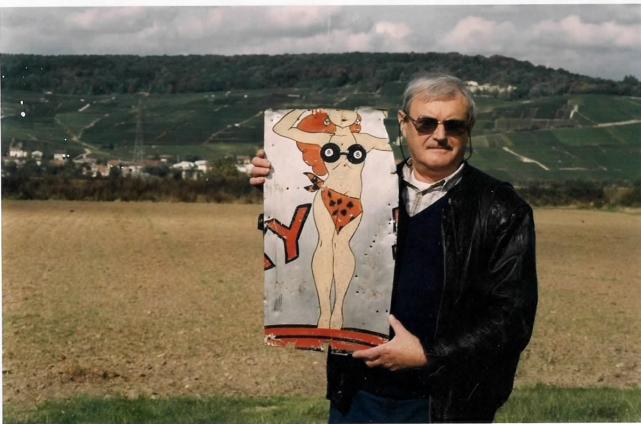
André Mathy dans les années 90 avec la plaque du Lucky Lady
André Mathy in the 90's with the plate of the Lucky Lady
© Lutz-Maddock Family - www.fold3.com
Quelques jours plus tard, André Mathy reviendra voir la carcasse de l'avion et découpera, avec les outils de son grand-père, un morceau de la carlingue sur lequel était écrit le nom de l'avion, "Lucky Lady". Les allemands pompaient pendant ce temps le carburant de l'avion. L'un d'eux s'approcha, confisqua la plaque découpée et la jeta un peu plus loins dans la paille. Elle sera retrouvée à la libération et envoyée en 1995 à Richard Lutz, fils de Leroy. André Mathy chercha longtemps à retrouver la famille du pilote. Enfin en 1995, André Mathy reçut un coup de téléphone du frère et de la belle-sœur de Leroy Lutz. ils se rencontrèrent en 1997, à Mardeuil.
A few days later, André Mathy returned to see the carcass of the aircraft and cut out, with the tools of his grandfather, a piece of the fuselage on which the name of the aircrfaft was written, “Lucky Lady”. German were pumping the gasoline of the aircraft in the same time. One of them approached, confiscated the plate and threw it in the straw a little further. It was found at the liberation and sent in 1995 to Richard Lutz, Leroy's son. André Mathy investigated a long time to find the pilot's family. Finally in 1995, André Mathy was called by the brother and the sister-in-law of Leroy Lutz. they met in 1997, in Mardeuil.
LA LEGENDE DE LITTLE EAGLE
THE LEGEND OF LITTLE EAGLE
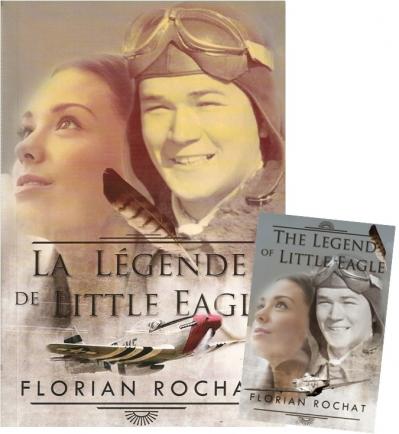 © Florian Rochat
© Florian Rochat
L'histoire de Leroy Lutz inspira l'écrivain Suisse Florian Rochat après que ce dernier ait trouvé en 1999 dans le Montana une lettre datée de 1947 et envoyée de Mardeuil par le secrétaire de mairie. Lutz habitait cependant le Nebraska et la lettre avait probablement été envoyée dans le Montana par confusion avec Arnold Helding, originaire du Montana, le pilote habituel du "Lucky Lady". Cette lettre racontait l'acte héroïque de Leroy Lutz et inspira Florian Rochat pour écrire une histoire similaire, celle de John Philip Garreau, pilote de P-51 Mustang. Ce roman s'intitule "La Légende de Little Eagle".
The history of Leroy Lutz inspired the Swiss author Florian Rochat after he found in 1999 in Montana a letter written in 1947 and sent from Mardeuil by the town clerk. But Lutz lived in Nebraska and the letter had probably been sent in Montana by confusion with Arnold Helding, from Montana, the usual pilot of “Lucky Lady”. This letter told the heroic act of Leroy Lutz and inspired Florian Rochat who wrot a similar story similar, the story of John Philip Garreau, a pilot of P-51 Mustang. This novel is entitled “the Legend of Little Eagle”.
.

